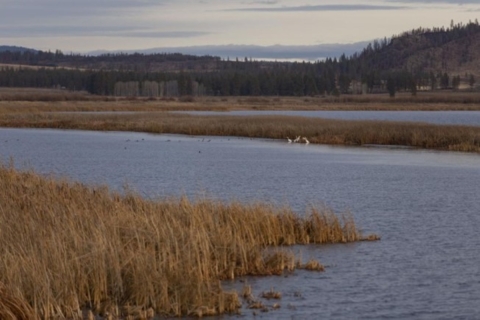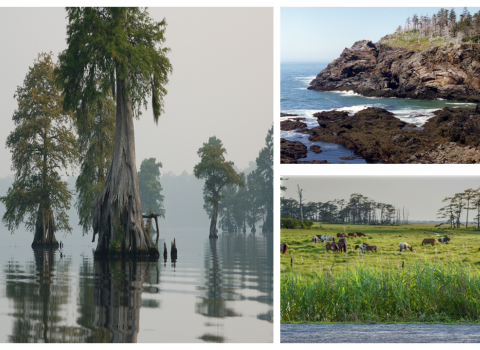After nearly 16 years, the U.S. Fish and Wildlife Service has completed a Final Environmental Assessment and a Finding of No Significant Impact for the restoration of a full range of wetland habitats (open water, submergent, emergent and seasonal fringe) across 14,000 acres of Upper Klamath NWR that will reconnect the Agency Lake and Barnes Units and other Service easements with Upper Klamath Lake. The action fulfills the primary refuge purpose by contributing to wildlife goals and objectives as detailed in the UKNWR Comprehensive Conservation Plan (USFWS 2016), as well as larger regional and continental landscape goals to conserve priority bird habitats.
The Service, along with our partners, will restore and reconnect historic fringe wetlands to benefit the greatest number of wildlife species in and around the refuge. Specifically, the project involves removing sections of levees on these units which will facilitate comprehensive wetland restoration on more than 14,000 acres. The restoration is expected to increase habitat for migratory waterfowl, restore historic stream channels, improve water quality, enhance passage and habitat for important fish and aquatic species in the Upper Klamath Basin, and increase water storage in Upper Klamath Lake.
Upper Klamath NWR was established in 1928 to protect some of these remaining wetlands “as a refuge and breeding ground for birds and wild animals.” Historically the Klamath Basin was dominated by approximately 185,000 acres of shallow lakes and freshwater marshes. These extensive wetlands supported some of the greatest autumn and spring concentrations of migrating waterfowl in North America. However, during the early 1900s many wetlands were converted to agricultural lands. Today, less than 25 percent of historic wetlands remain.



